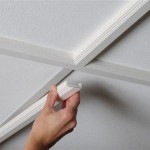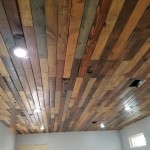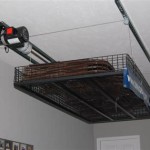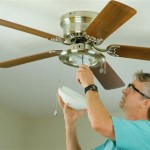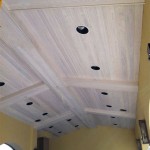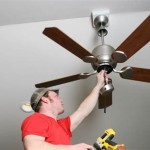Ceiling water stains are unsightly blemishes that can appear on the ceilings of homes or businesses. They are caused by water leakage or condensation that’s been absorbed into the ceiling material. It is important to identify the cause of the stain before attempting any repair work.
Types of Water Leaks That Can Cause Ceiling Stains
The most common causes of ceiling water stains are roof leaks, plumbing leaks, and condensation. In order to determine the source of the leak, it is important to inspect the area carefully.
Roof Leaks
Roof leaks can be caused by a variety of factors, such as poor flashing installation, cracks in the roof, worn sealant, and missing shingles. When inspecting for roof leaks, look for signs of water damage on the ceiling, walls, and floors.
Plumbing Leaks
Plumbing leaks can also be a potential cause of ceiling water stains. Leaky pipes and fittings, clogged drains, and faulty seals can all contribute to water damage. To inspect for plumbing leaks, look for signs of water damage near pipes and fixtures.
Condensation
Condensation can be caused by high humidity or warm air coming into contact with a cool surface, such as a ceiling. Condensation can form when air is not allowed to circulate freely, such as in poorly ventilated rooms or attics. To inspect for condensation, look for signs of water droplets on the ceiling.
Preventing Ceiling Water Stains
There are several steps you can take to prevent ceiling water stains from occurring. These include:
- Conducting regular roof, plumbing, and ventilation inspections.
- Checking for signs of water damage.
- Repairing any roof, plumbing, or ventilation issues promptly.
- Ensuring adequate ventilation in attics and other enclosed areas.
- Using a dehumidifier to reduce humidity levels.
Cleaning and Repairing Ceiling Water Stains
Ceiling water stains can be difficult to remove. If the stain is caused by a leak, it is important to repair the source of the leak before attempting any cleaning or repair work. Once the leak has been repaired, the affected area can be cleaned and repaired. Depending on the type of ceiling material, cleaners such as bleach, vinegar, or baking soda can be used to remove mild stains. For more stubborn stains, a mild detergent and water can be used. For more serious damage, it may be necessary to replace the affected area of the ceiling. If the ceiling is made of drywall, the damaged area can be cut out and replaced with new drywall. If the ceiling is made of plaster, the area can be patched with plaster.
Conclusion
Ceiling water stains can be unsightly and can cause damage to ceilings. It is important to identify the source of the leak and repair it promptly. Regular inspections of the roof, plumbing, and ventilation can help to prevent ceiling water stains from occurring. If a ceiling water stain does occur, it can be cleaned and repaired in order to restore the ceiling to its original condition.














Related Posts

